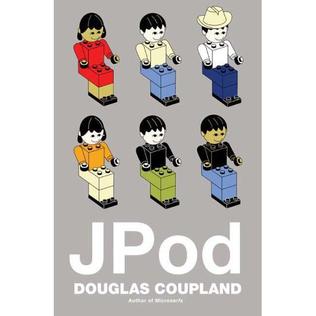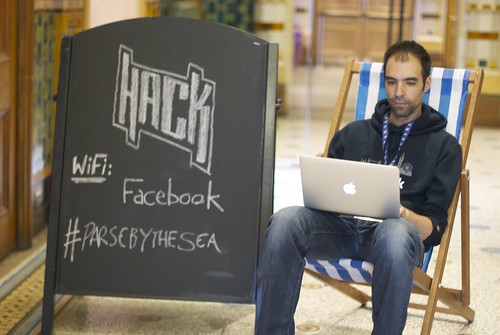How (Not) to Build a Metaverse
Wed 05 October 2022 by Jim PurbrickEarlier in the year I helped Josh Sanburn and his team put together a podcast series on building Second Life for the Wall Street Journal called “How To Build a Metaverse” which I’m now really enjoying. It’s great to hear all of the amazing stories about the origin of Second Life told by some of the most amazing people I’ve ever worked with, but the stories I’m enjoying the most are the stories I hadn’t heard before.
An incredible example from the most recent episode is the story of how Second Life’s moderation began. Peter Alau tells the tale of how he cribbed together a 20 paragraph Terms of Service using examples from other virtual worlds before Philip stepped in and mandated that the terms of service should be “Be Nice”.
My life was changed forever when I read Julian Dibbell’s article “A Rape In Cyberspace” while working on the literature review for my PhD in Persistent Virtual Environments at the University of Nottingham. The article made me realize that virtual worlds were not just a collection of interesting technical challenges, but that they could become real, meaningful communities and that the people who met in them could be hurt, just as they can in real life. Reading Dibbell’s article made me want to work on commercial virtual worlds that enabled those real human communities rather than experimental worlds that only existed as technical proofs of concept. I left academia, started working in the games industry, and quickly found the Terra Nova group blog that Julian Dibbell was contributing to along with Cory Ondrejka, the CTO of Linden Lab.
Given the path that led me to Second Life, I was saddened to hear that the origin story of moderation in Second Life didn’t mention it. Peter should have known that people wouldn’t read his epic Terms of Service, but at least he tried to apply best practice. “A Rape In Cyberspace” was already 10 years old when Second Life launched and Linden Lab were talking to many of the pioneers who worked on early virtual worlds. Philip should have known better, but pursued a wishful, naive approach to moderation and Second Life ended up learning a lot of lessons that had already been learned the hard way.
This wasn’t the only occasion that Second Life’s design was optimistic, naive and didn’t give enough thought to how it might be abused by bad actors. When I first visited San Francisco I hosted a party on Russian Hill to get to know my colleagues only to end up huddled in the living room with other engineers battling a plague of grey goo spreading across the grid that was enabled by an over-permissive API. The API allowed scripted objects to self-replicate and so exponentially overwhelm regions until firewalls of shut down simulators limited the spread and space lasers were able to delete scripts to purge the world of the menace. Shortly after I returned to the UK I woke up one morning to my first encounter with the infamous Goatse image which a resident had pasted across the world so that it would show up on the live map that had been naively been added to the front page of secondlife.com without enough thought about how it might be abused.
Eventually Second Life’s moderation policies and processes got to a good place (Robin Harper was one of the people I spoke to about best practices for moderation when I was working on building safety into Oculus Venues) but the story of how moderation began in Second Life is one of missed opportunities. We shouldn’t just laugh off Second Life’s failings as the stories of swashbuckling hackers while at the same time pointing fingers at the similar failings of the current efforts to build a Metaverse. Multi-user virtual worlds were already 20 years old when Second Life was built and many lessons had already been learned.
“How To Build a Metaverse” is incredibly entertaining and illuminating, but this part of the story is a good example of how not to build a metaverse. You can’t just read the fiction about virtual worlds and ignore the non-fiction. You can’t just talk to people who built early virtual worlds or hire them: you have to actually listen to them and apply the lessons they learned.
Virtual Worlds, Real People
Last week I gave a lab talk to my former research colleagues at the Mixed Reality Lab at the University of Nottingham about the work I’ve been doing since leaving the lab over 20 years ago. Rather than talk about technology I focussed on the lessons that todays efforts …
read moreThe Art Of Social VR
The recording of my recent Stereopsia 2020 talk about the art of designing social VR experiences is now online. The talk summarises a lot of material covered in more depth in my posts on The Conversation Around Content, A Tall Dark Stranger and Small Places Loosely Joined, so if please …
read moreReplicated Redux: The Movie
The recording of my recent React Europe talk about Replicated Redux is now online and I’ve written several other posts describing designing, testing and generalising the library if you would like to know more about the details. If you’d like to play the web version of pairs or …
read moreGeneration JPod
I’ve just got back from Kaş where I spent a lovely few days celebrating Pinar and Simon’s wedding and while there spent a few hours reading Now We Are 40: a thoughtful and entertaining look at everything from house music to house prices from the perspective of Generation …
read more2² Decades
Several years ago when we were in 100 robots together, Max was celebrating his 40th birthday. When I said that mine would be in 2017, it felt like an impossibly far future date, but, after what feels like the blink of an eye, here we are.
Along with many other …
read morecrestexplorer
At the 3rd Party Dev State of the Union at EVE Fanfest 2016 earlier this year, CCP FoxFour drew my attention to a limitation of the current approach used by crestmatic to generate CREST documentation: it only discovers resources always reachable from the API root from the perspective of the …
read morecrestmatic
A year ago I gave a talk at EVE Vegas about building RESTful CREST applications. My #1 recommendation was to specify representations in requests, but that’s hard to do when there is little documentation on which representations are available and what they contain.
Fortunately CREST is self describing: send …
read moreOrganisational Structures
There have been a number of blog posts recently about exciting new organisational structures. As Cory points out “Every early stage company thinks it has reinvented management”: a very dangerous belief when betting on a new organisational structure can be much riskier than betting on the wrong product.
It starts …
read moreBeyond Time Dilation?

EVE online is a remarkable game. On Monday over 2000 people spent over 20 hours destroying virtual spaceships worth 200,000 USD in real money in what was the likely the largest battle in a video game ever. That EVE is capaple of supporting such large engagements is an amazing …
read moreParse By The Sea
A few weeks ago Facebook London hosted the Parse By The Sea hackathon at the Brighton Dome as part of the Brighton Digital Festival. The idea was to take one of our internal hackathons on the road and invite members of the public to join us, turning a hackathon in …
read moreFacebook Hackathons
I’ve been a big fan of hackathons since one of the first Yahoo! Hack Days I attended at Alexandra Palace was struck by lightning. The lightning caused the fire alarms to go off which opened the roof to let the torrential rain pour on to hundreds of geeks and …
read moreBrighton Digital Festival
The Brighton Digital Festival starts this week and I’m very happy to be helping out with Facebook London‘s contributions: Parse By The Sea, a mobile app Hackathon featuring Parse on the 26th of September, and helping to Connect The Brighton Digital Festival by sponsoring Metranet to provide high …
read moreGoogle+ First Thoughts
After months of rumours it’s finally here, so what is Google+ like? My first thoughts are that it’s super slick and that Circles definitely makes it different, but I’m not sure better.
Limiting the distribution of shared information will likely also limit the growth of the network …
read moreHTML 5 multimedia
I’ve been morbidly fascinated by the Rich Internet Application technology blood bath for a while now: Whirled,Metaplace and others tried to stuff virtual worlds in to web pages using Flash, Second Life stuffed Flash in to virtual worlds via Webkit, Unity stuffed Mono in to a 3D engine …
read moreFOSDEM X: The Movie
@scalecamp
On Friday I jumped on the train to London to attend the first scalecampuk, an unconference about scalability, at the Guardian offices.
The sessions were all very interesting and mostly very relevant. I learned new things about XSS and CSRF and Django’s defences against them from Simon Willison, new …
read more The Creation Engine No. 2
The Creation Engine No. 2

